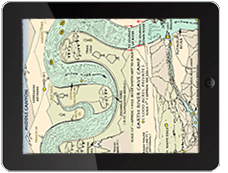Excerpted from Cultural Survival Magazine
NATO's Invasion: Air combat training and its Impact on the Innu first Nation.
“The Innu, otherwise known as Montagnais-Naskapi Indians, constitute an indigenous nation of about 10,000 people who live in a number of communities in eastern Québec and Labrador. Many Innu continue to pursue an a age-old hunting, trapping, fishing and gathering way of life. In the fall and spring each year, Innu families leave their communities and travel far into the interior of the Québec-Labrador peninsula where knowledge of hunting, trapping, fishing, hide preparation, cooking methods and traditional religious beliefs can be most effectively transmitted to younger generations., Unfortunately, the survival of Innu culture is now seriously in doubt due to the expanding military air combat training activities in the peninsula and plans to establish an $800 million NATO Tactical Fighter and Weapons Training Center in Goose Bay, Labrador.
The main problem for the Innu at this time is low-level flight training based in Goose Bay by the West German Luftwaffe using primarily Phantom II and Tornado aircraft and the British Royal Air Force using Tornados. According to both Innu and Settler (Inuit/White descent) reports, the aircraft fly so low that their exhaust makes waves on the surface of lakes and river, ripples the canvas on tents and sways trees. West German Phantom IIs, either singly, in tandem, or as many as four in low-level formation, fly as low as 100 feet, passing through canyons, valleys and over lakes where Innu camps are located. Pilots have even engaged in "hot dogging", standing the aircraft on end over a camp or hunting party, kicking in the afterburners, and shooting straight up into the air above the heads of the Innu.
The Innu say that the extremely loud and unexpected noise generated by low-flying aircraft is extremely traumatic, especially for the young and the elderly. They report that on occasion their children have jumped out of canoes and into the water and have run into the forest to seek refuge from the jets. Other children have left their camps and run into the forest, and their parents have experienced difficulty finding them. Many Innu men feel that they cannot leave their hunting camps to check more distant traplines because they are worried about the adverse reaction of their children to the overflights. Innu report that after an overflight they experience a ringing in their ears which may last hours.
The country where the Innu live and hunt is extremely quiet mainly limited to camp noise of children playing and adults conversing, and chopping wood. Away from the camps it is so quiet you can hear yourself breathe, and even the sound of the canoe paddles flicking the water seems like a lot of noise. The sudden arrival of a noisy jet is obviously a horrendous contrast to the tranquility and solitude normally present. Apparently, during the fall of 1983, a number of Innu children from La Romaine on the Québec North Shore had to return to the community because of their fear of the aircraft. Some Innu have said that they will never again go out in the country for the fall as long as the low-level flights continue, because the loud, unexpected noise is just too traumatic for them and their children.
Innu claims that the extremely loud and unexpected noise generated by low-flying jets severely traumatizes their children and discourages the from going into the country are not exaggerations. Rural peoples in Scotland and Wales, have been complaining for years about the serious public health problems posed by noisy low-flying military jets.
Civilians in rural Europe exposed to the above-pain threshold noise from the military aircraft have been told that the jet noise is the "sound of freedom" or the "price of peace." Nevertheless, growing public opposition is motivating the German government to export its unwanted domestic problem to the skies above Innu bush camps and hunting parties.
Many medical professionals and researchers who are familiar with the literature on the effects of jet noise and sonic booms have concluded that military training operations such as those experienced by the Innu constitute a serious public health problem. According to Dr. Richard Bargen, an MD living in Nevada who has studied the health effects of low-level and supersonic jet noise, "people cannot overcome the 'startle effect' induced by extremely loud and unexpected noise - they never habituate to this kind of adverse stimulus." For example, the noise produced by the Phantom II F-4, one of the aircraft used by the West German Air Force iover the Inu territory is 134.8 dBA at 200 ft 140.8 dBA a 100 ft, and 146.5 dBA at 50 ft. The pair threshold for most people is somewhere between 110 and 130 dBA and permanent damage to the inner ear can occur as a result of exposure to noise in excess of 140 dBA for more than five milliseconds.”


